Nations with the largest gold reserves: India at 11
India owns over 18,000 tonnes of above ground gold stocks worth approximately $800 billion and representing at least 11 per cent of global stock, according to estimates of World Gold Council.
This is equivalent to nearly half an ounce of gold ownership per capita, a figure which is significantly below consumption in Western markets, representing scope for additional future growth”, says a WGC research paper entitled ‘India: Heart of Gold’.
In 2009, total Indian gold demand reached $19 billion, or Rs 974 billion, which accounts for 15 per cent of the global gold market, according to WGC.
While Indian consumers continue to stock gold despite rising prices, when it comes to total gold reserves in the country, India ranks 11th in the world with 557.7 tonnes of gold. Above the ground gold stocks is different from the total gold reserves.
Over the past ten years, the value of gold demand in India has increased at an average rate of 13 per cent per year, outpacing the country’s real GDP, inflation and population growth by six per cent, eight per cent and 12 per cent respectively.
The country currently has one of the highest saving rates in the world, estimated at around 30 per cent of total income, of which 10 per cent is already invested in gold.

“India is the largest gold market in the world and, as such, the likely recovery of local gold demand to pre-crisis levels is of considerable strategic importance to the wider gold market. Gold is an integral part of Indian society and a foundation of wealth and savings in India,” Eily Ong, Investment Research Manager at the WGC, said.
As consumers have adjusted their price expectations upwards, a further rise in gold jewellery and investment demand is anticipated and this trend is projected to continue over the long-run as local investors are buying gold driven by wealth accumulation motives,” Ong said.
Over the past ten years, the value of gold demand in India has increased at an average rate of 13 per cent per year, outpacing the country’s real GDP, inflation and population growth by 6 per cent, 8 per cent and 12 per cent respectively.
The country currently has one of the highest saving rates in the world, estimated at around 30 per cent of total income, of which 10 per cent is already invested in gold.

“India is the largest gold market in the world and, as such, the likely recovery of local gold demand to pre-crisis levels is of considerable strategic importance to the wider gold market. Gold is an integral part of Indian society and a foundation of wealth and savings in India,” Eily Ong, Investment Research Manager at the WGC, said.
As consumers have adjusted their price expectations upwards, a further rise in gold jewellery and investment demand is anticipated and this trend is projected to continue over the long-run as local investors are buying gold driven by wealth accumulation motives,” Ong said.
Over the past ten years, the value of gold demand in India has increased at an average rate of 13 per cent per year, outpacing the country’s real GDP, inflation and population growth by 6 per cent, 8 per cent and 12 per cent respectively.
The country currently has one of the highest saving rates in the world, estimated at around 30 per cent of total income, of which 10 per cent is already invested in gold.
United States (Rank 1)
America has the largest gold reserves in the world. The country has 8,133.5 tonnes of gold reserves, which constitutes 72.1 per cent of the country’s total forex reserves.
The USA is also the world’s third highest buyer and fourth largest producer of gold.
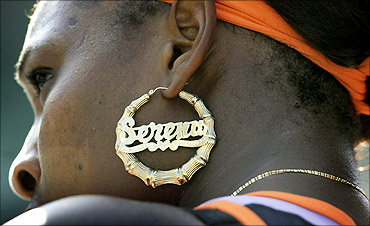
Figures: World Gold Council, as of September, 2010.
Germany (Rank 2)
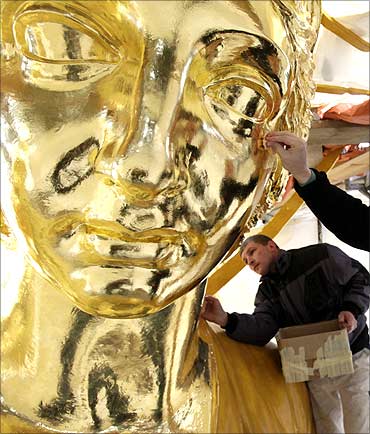
Germany has 3402.5 tonnes of gold, which is about 67.4 per cent of the country’s total forex reserves.
The Deutsche Bundesbank keeps a large part of its gold holdings in its own vaults in Germany, while some of its gold is also stored with the central banks located at major gold trading centres.
IMF (Rank 3)
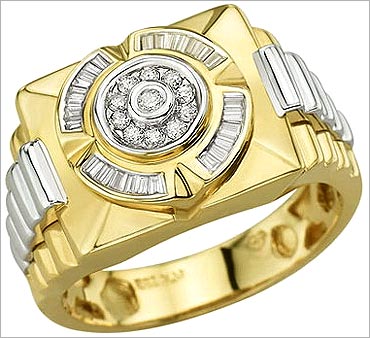
The IMF ranked third has 2,907 tonnes of gold reserves.
The International Monetary Fund has sold 200 metric tonnes of gold to the Reserve Bank of India for about $6.7 billion, in a bid to increase the Washington-based financial institution’s capacity to lend to poor nations.
Italy (Rank 4)
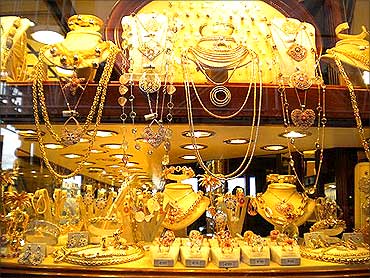
Italy has a rich gold history. It has 2451.8 tonnes of gold reserves, which is about 66.2 per cent of the total forex reserves.
France (Rank 5)
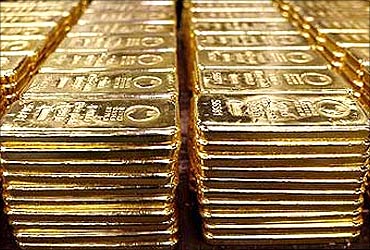
France has 2435.4 tonnes of gold reserves, which is about 65.7 per cent of the total forex reserves.
China (Rank 6)
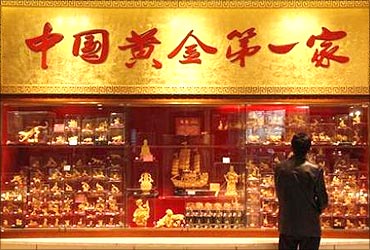
According to the World Gold Council, the share of global gold demand in China doubled from 5 percent in 2002 to 11 percent in 2009.
China has 1054.1 tonnes of gold, which is 1.5 per cent of its total foreign reserves.
Switzerland (Rank 7)
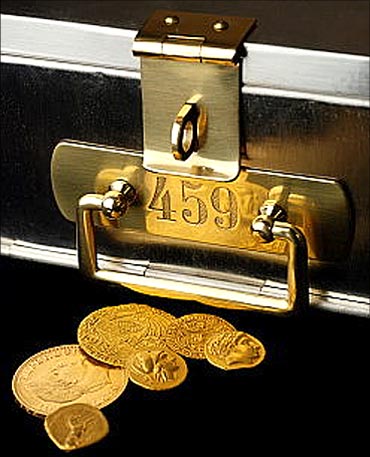
Switzerland has 1040 tonnes of gold reserves, which is about 15.1 per cent of the total reserves.
Japan (Rank 8 )
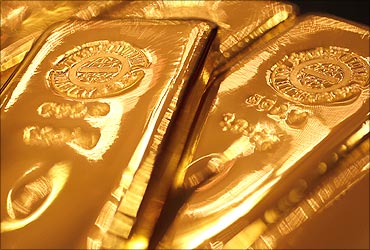
Ranked among the top 10, Japan has 765.2 tonnes of gold reserves, which is about 2.7 per cent of the total foreign reserves.
Russia (Rank 9 )
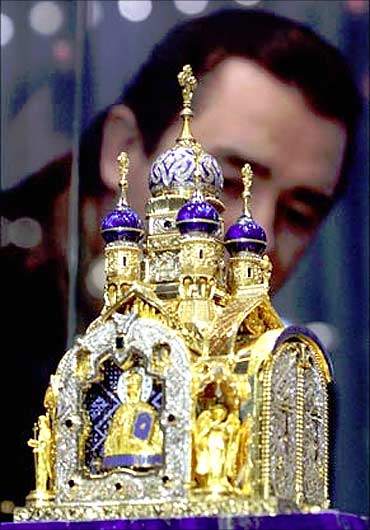
Russia has 765.2 tonnes of gold reserves which is about 5.7 per cent of the total forex reserves.
Russia is the world’s seventh largest buyer of gold and the sixth largest gold-producer.
Netherlands (Rank 10)
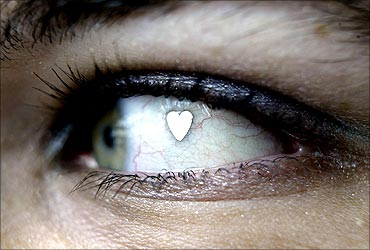
Netherlands has 612. 5 tonnes of gold reserves, which is about 55.8 per cent of the total foreign reserves.
Image: In Netherlands, eye surgeons have implanted tiny pieces of jewellery called ‘JewelEye’ in the mucous membrane of the eyes of six women and one man in cosmetic surgery pioneered by an ophthalmic surgery research and development institute in Rotterdam. The procedure costs 500 euros.
ECB (Rank 12)

The European Central Bank has 357.8 tonnes of gold reserves which is about 25.9 per cent of the total foreign reserves. Europe’s central banks have all stopped the sales of their gold reserves.
Taiwan (Rank 13)

Taiwan has 422.1 tonnes of gold reserves, which is about 25.9 per cent of the total foreign reserves.
Portugal (Rank 14)
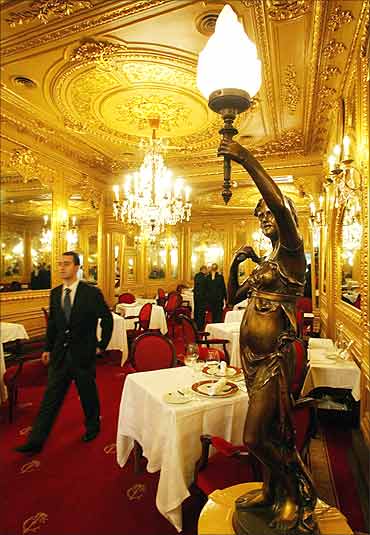
Portugal has 606.7 tonnes of gold reserves, which is about 79.6 per cent of the total foreign reserves.
Venezuala (Rank 15)
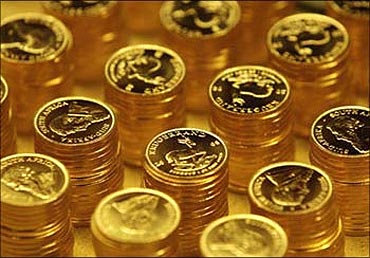
Venezuala has 311.0 tonnes of gold reserves, which is about 48.5 per cent of the total foreign reserves.
Saudi Arabia (Rank 16)

With 143 tonnes of gold reserves, Saudi Arabia is ranked at 16th position. The reserves contribute 2.7 per cent of the country’s total foreign reserves.
United Kingdom (Rank 17)
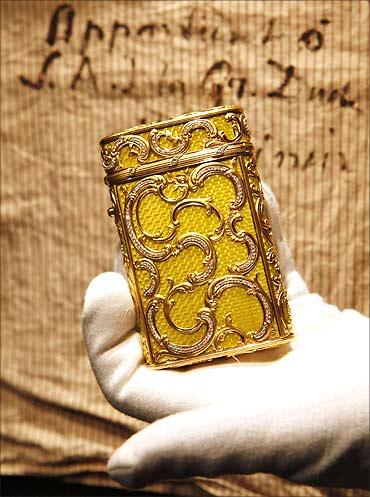
United Kingdom has 588.3 tonnes of gold reserves which is about 15.6 per cent of the total foreign reserves.
Lebanon (Rank 18)
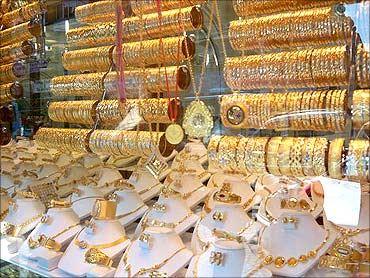
Lebanon has 286.8 tonnes of gold reserves which is about 25.2 per cent of the total foreign reserves.
Spain (Rank 19)

Spain has 281. 6 tonnes of gold reserves, which is about 35.9 per cent of the total foreign reserves.
Austria (Rank 20)
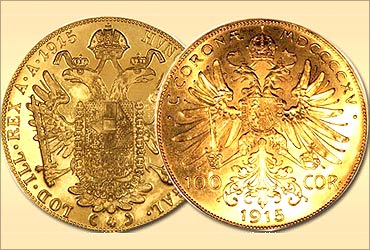
Austria has 280 tonnes of gold reserves, which is about 35.9 per cent of the total foreign reserves.
Source : Rediff

